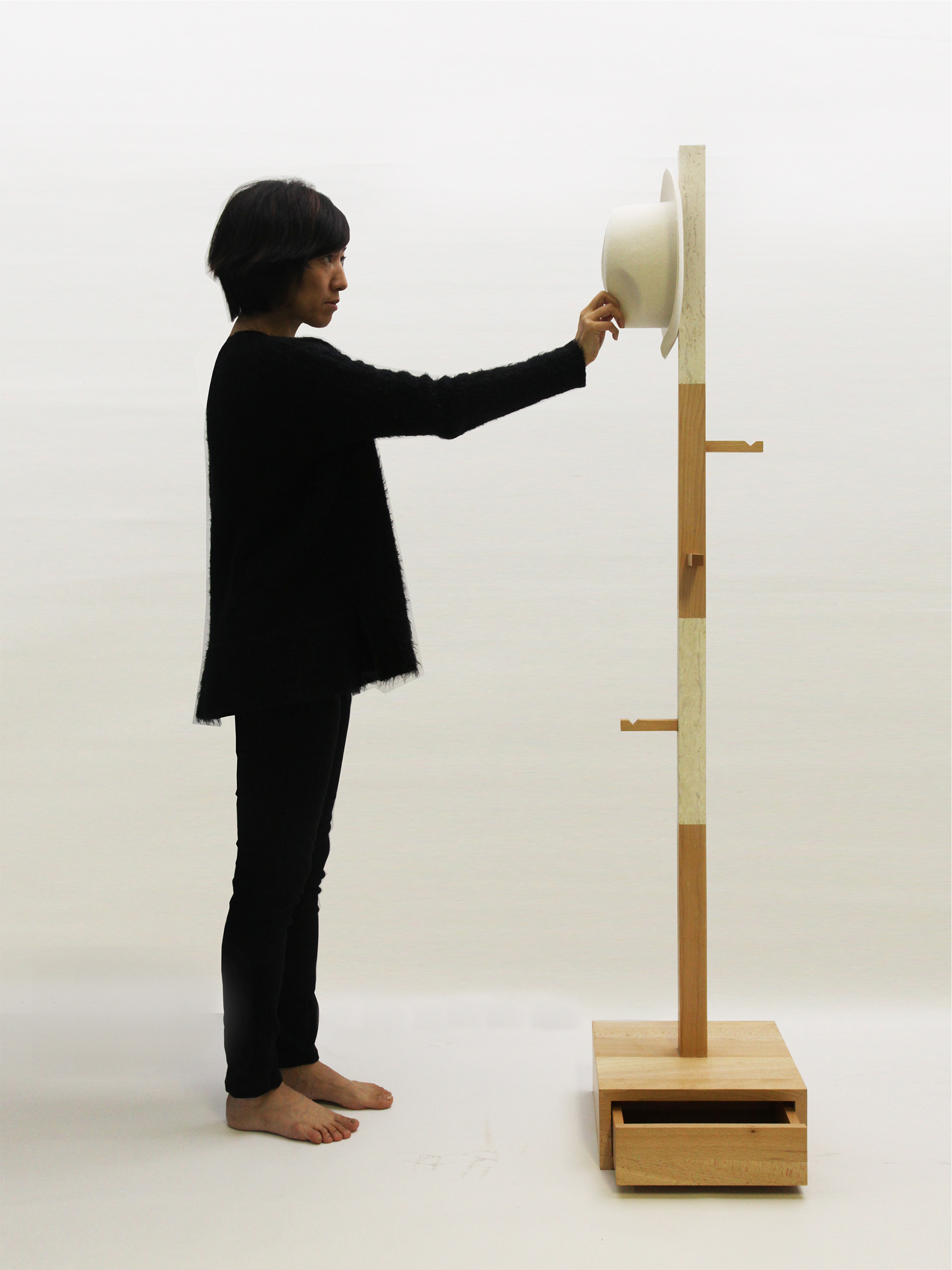废弃的纸浆经过固化处理成为坚固材质,其强度达到板材,且具备可塑性,将其塑为三维曲面,形成作品最初的构想。
纸浆的属性在这里发生相应的转变,软、轻、薄变为硬、韧、厚,而之后改变了属性的纸桌面代替了木制桌面,形态柔软而内在坚固,虽名为软桌,视觉判断与内在不同却构成此作品的综合体,从而重新判断和界定其产品属性。软桌不同于普通桌子的特殊之处在于挖掘纸的特殊属性将其设计为波浪起伏的造型,其功能定义为可以睡觉小憩而用,桌面曲线符合人体工程学的曲度变化,设计为适合人体趴靠在桌面上的体态轮廓,同时也可以正常使用。
纸桌的特殊功能不仅体现在外观形态,最主要的因素体现在其材质特殊性,纸因为柔软,视觉感受上柔和自然,触感如棉,而其形态因为浇筑而坚固,可以承重。
在本作品中,纸材质的研究有助于优化纸再生设计,新材质与材质新用的设计已成为未来产品趋势,另外可以希望警醒大家关注环境保护与废物再造。
Paper Table (Paper, 2016)
The designer has turned the waste paper pulp into solid material through solidification treatment to make its strength as plates with plasticity and has a three-dimensional curved surface. This is the original idea of this work.
The nature of paper pulp has changed correspondingly from soft, light and thin to hard, tough and thick. Then the paper takes place of the wooden table top, with a soft form outside but solid inside. Though the same of the table is soft table, the difference between its visual impression and the inner character makes it an interesting complex, the designer redefines the nature of the product. The unique feature of soft table lies in excavating the special nature of paper in order to design it for the undulating shape. Its function is defined for taking a sleep or a snooze. The curves on the table top are in accord with the curvature changes of human body engineering. It is fit for the posture when people bend over the table and it is also for normal use.
The special function of paper table does not only reflect in the appearance of its physical appearance, but the most important factor is embodied in its material particularity. For the visual perception, paper feels gentle and natural like cotton because it is soft, but for this product, the designer makes the paper table to be solid and load-bearing after casting.In this work, the paper material research will help to optimize the paper recycling design, new materials and materials with the new design has become a tendency of the product in the future , in addition we hope to alert you to focus on environmental protection and waste recycling.
“纸桌”产品介绍:
材料:二次废纸浆,枫木。
尺寸:100*100*70cm
“Paper Table” Introduction:
Materials: recycled paper pulp, maple
Size: 100*100*70cm
纸砖(纸,2016。)
对于纸这一特质的材料,其具备常性形态与特殊属性,而将其固化、塑形,使之呈现另外的不常态,这对材质本身也是一个挑战也是全新的尝试。于是纸、砖的属性在浇筑的行为中发生冲突,先是表观,发展到强度。纸质在以砖的形态形成之后,脆弱而坚固、柔和而硬朗。建造象征重生,如果在这里执行“建造”,意味可以尝试二次纸浆的重塑,因为二次纸浆大部分是废浆。自重轻、体积大的废浆可以重构为高密集物质,成为可研究性的建筑新材料。
Paper Brick (Paper, 2016)
Paper is a kind of materials with characteristics of both commonality and specialty. However, it’s a brand new challenge for paper itself to present it in a special way through solidification treatment and moulding. Therefore, the property of paper and brick is conflicted through casting, from presenting, developing to strengthening. When the paper is presented in a brick shape, it’s weak but strong, soft but hard. Constructing is like rebirth. “Constructing” means taking a chance to re-construct the recycled paper pulp, which mostly known as a waste. The waste pulp with light weight but big shape can be re-constructed into high density material, which turns to be a new building material for research.
“纸砖”产品介绍:
材料:二次废纸浆。
类型:多孔砌块纸砖。
规格:42*21*7cm/单品。
工艺:浇筑。
基本属性:表观密度大、自重量中度、抗压强度10-30MPa(较高强度),抗拉强度1-3MPa(中强度),抗折强度2-4MPa(中强度)。
特性:承重、易砌筑、防水、环保、室内外可用。
“Paper Brick” Introduction
Materials: recycled paper pulp
Type: Porous paper brick
Size: 42*21*7cm
Technology: casting
Basic Property: density on surface, medium weight, high compressive strength (10-30MPa), medium strength of extension (1-3MPa), medium breaking strength (2-4MPa)
Characteristics: load-bearing, easy bricklaying, waterproof, environmental protection, available indoor and outdoor.
二次废纸浆 recycled paper pulp
设计类型:产品设计
Design Type: Product Design
设计者:李晓明
Designer: Li Xiao-Ming
设计公司:建筑营设计工作室(www.archstudio.cn)
Design Company: Arch Studio(www.archstudio.cn)
设计时间:2016
Design Time: 2016
材料:二次废纸浆
Material: recycled paper pulp
设计师介绍——
李晓明
中央美术学院建筑学院工学硕士,中央美术学院城市设计学院教师,建筑营设计工作室产品设计师。
Li Xiao-Ming, received her master degree in CAFA (China Central Academy of Fine Arts). She is a teacher at School of City Design in CAFA and Product Designer in Arch Studio.
《Hi设计》已获授权,版权归原作者所有。





















